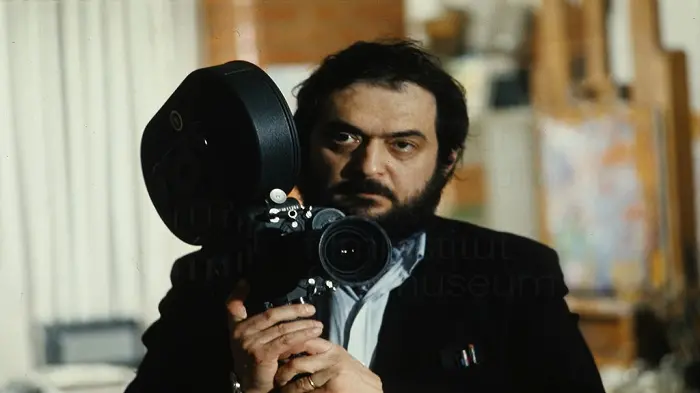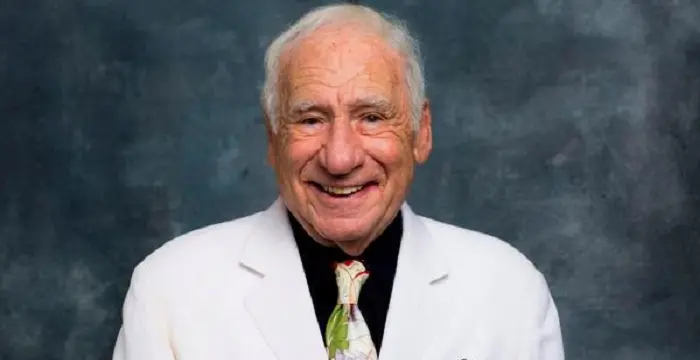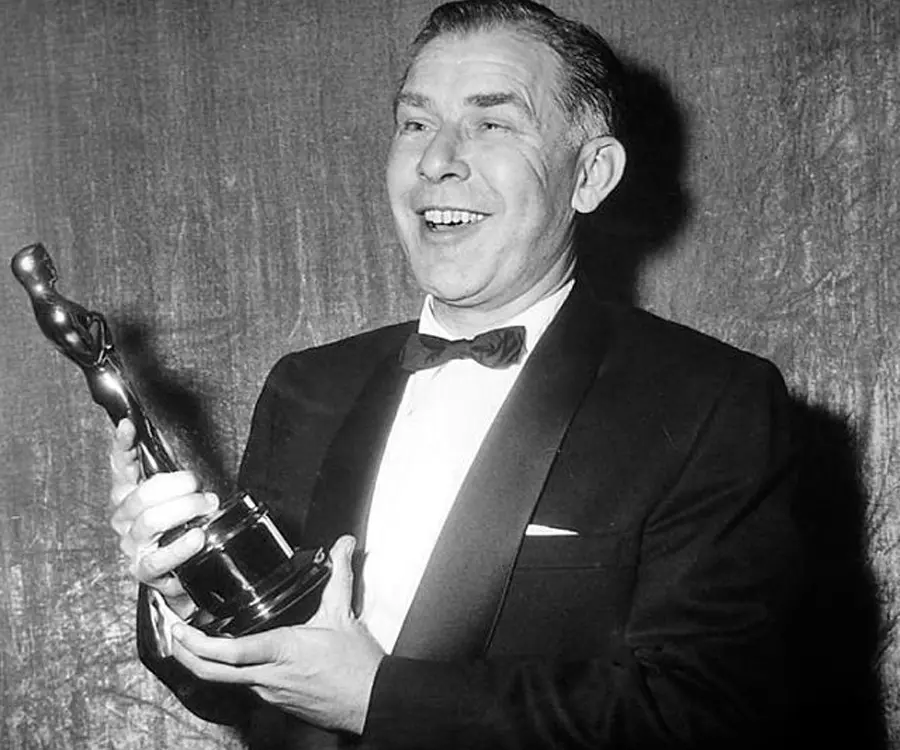George Seaton - Film Director, Timeline and Childhood
George Seaton's Personal Details
George Seaton was a distinguished American film director, producer, screenwriter, playwright and theatre director
| Information | Detail |
|---|---|
| Birthday | April 17, 1911 |
| Died on | July 28, 1979 |
| Nationality | American |
| Famous | Film & Theater Personalities, Directors, Writers, Film Director, Screenwriter |
| Spouses | Phyllis Loughton (1936–79) |
| Cause of death |
|
| Birth Place | South Bend, Indiana |
| Gender | Male |
| Sun Sign | Aries |
| Born in | South Bend, Indiana |
| Famous as | Screenwriter, Film Director |
| Died at Age | 68 |
// Famous Film Director
Stanley Kubrick
Stanley Kubrick was a screenwriter and film director known for his movies like ‘The Clockwork Orange’ and ‘The Shining’. This biography of Stanley Kubrick provides detailed information about his childhood, life, achievements, works & timeline.
Baz Luhrmann
Baz Luhrmann is an Australian writer, filmmaker, and producer. Check out this biography to know about his birthday, childhood, family life, achievements and fun facts about him.
Mel Brooks
Known as the king of farces and comic parodies, Mel Brooks is a famous American film director, comedian, actor, producer and composer. This biography provides detailed information on his childhood, life, career, works, achievements & timeline.
George Seaton's photo
Who is George Seaton?
George Seaton was a distinguished American film director, producer, screenwriter, playwright and theatre director. He made a humble beginning as a gag writer and general factotum in the entertainment industry and with his hard work and dedication rose up to become an exceptionally gifted writer and director. Starting with playing ‘The Lone Ranger’, in the test broadcasts of the radio show, he eventually got to play the title role in the show’s regular schedules. He was inducted as a contract writer by ‘MGM’ in early 1930s and thereafter by ‘20th Century Fox’ in early 1940s, where he contributed to writing several scripts. Film ‘Diamond Horseshoe’ marked his debut in direction following which he made several films contributing to direction and screenwriting. Some of the notable ones are ‘Apartment for Peggy’, ‘The Big Lift’, ‘Chicken Every Sunday’, ‘The Shocking Miss Pilgrim’, ‘For Heaven's Sake’ and ‘Little Boy Lost’. However he is best known for the films ‘Miracle on 34th Street’ and ‘The Country Girl’, both of which earned him ‘Academy Award for Best Adapted Screenplay’. The former also fetched him ‘Golden Globe Award for Best Screenplay’. The 1970 American drama film, ‘Airport’ directed by him was not only a box office hit but also earned ten ‘Academy Awards’ nomination including one for his screenplay.
// Famous Screenwriter
Kathryn Eastwood
Kathryn Eastwood, born as Kathryn Ann Reeves, is an American actress and screenwriter from America. Check out this biography to know about her childhood, family life, achievements and fun facts about her.
Adam Sandler
Adam Sandler is an American actor and comedian known for his roles in films like ‘Punch-Drunk Love’ and ‘The Wedding Singer’. This biography of Adam Sandler provides detailed information about his childhood, life, achievements, works & timeline.
Nikolaj Coster-Waldau
Nikolaj Coster-Waldau is a Danish actor, screenwriter, and producer. Check out this biography to know about his birthday, childhood, family life, achievements and fun facts about him.
Childhood & Early Life
He was born George Stenius on April 17, 1911, in South Bend, Indiana, to Swedish parents who emigrated from Stockholm.
He was baptised as Roman Catholic. He spent his childhood in Jewish neighbourhood of Detroit and considered himself a ‘Shabas goy’. He attended an Orthodox Jewish Yeshiva and studied Hebrew and was also mitzvahed.
Career
Making up his mind to pursue a career in acting he completed his graduation and instead of continuing his studies at Yale University he joined stock theatre company of noted American theatre director, actress, and drama company manager, Jessie Bonstelle for a weekly remuneration of $15.
During this time he changed his name to George Seaton as he felt ‘Seaton’ would be a much easier word to pronounce.
While acting on-stage he also contributed his voice for the title role of a program called ‘The Lone Ranger’ that was aired in ‘WXYZ’, a commercial radio station licensed to Detroit, Michigan. He first supplied his voice in the test broadcasts of the program in January 1933 and then contributed in the program’s regular schedules.
According to him, as he was unable to whistle for his horse as per requirement of the script of ‘The Lone Ranger’, he devised the cry ‘Hi-yo, Silver’.
He submitted one of the plays he wrote in the office of ‘Metro-Goldwyn-Mayer’ Studios Inc (‘MGM’), the famous American media company in 1933. Upon reading the play renowned American film producer Irving Grant Thalberg, who was often referred as ‘The Boy Wonder’ and who had an extraordinary quality of choosing the right scripts, was quite impressed by the potential of young Seaton.
The result was Seaton’s induction as contract writer by ‘MGM’ in 1933 with a weekly remuneration of $50.
The next few years saw him working as an ideas man and gag writer, although many of his work went uncredited. He got his break in 1935 when he contributed to the first film that the Marx Brothers did with ‘MGM’ after coming out from ‘Paramount Pictures’. It was a comedy titled ‘A Night at the Opera’ and the film emerged to be a blockbuster hit.
Impressed by his contribution, Groucho Marx, one of the Marx brothers counted among best comedians of that time, sought collaboration of Seaton on screenplay of their upcoming comedy ‘A Day at the Races’. This film marked Seaton’s first major screen credit as one of its writers along with Robert Pirosh and George Oppenheimer. Released on June 11, 1937, the film was a smashing hit.
During 1939-40 he worked for a short while with ‘Columbia Pictures’, another famous American film production and distribution studio, where he came under the guidance of producer William Perlberg.
In 1941 Perlberg left ‘Columbia Pictures’ and joined another major American film studio, ‘20th Century-Fox’. Seaton accompanied Perlberg and the collaboration of the duo gave Seaton full discretion to pen down screenplay for the 1943 religious drama, ‘The Song of Bernadette’. The film became a commercial success and earned him his first ever ‘Academy Awards’ nomination.
His contract with ‘20th Century-Fox’ as a writer was till 1950 within which time he wrote several film scripts including Technicolor musical ‘Moon Over Miami’ (1941); historical comedy ‘Charley's Aunt’ (1941); and Technicolor musical ‘Coney Island’ (1943).
Meanwhile he also delved as a playwright making his debut with ‘But Not Goodbye’ in ‘Broadway’ in 1944. The show however closed after twenty-three onstage performances.
His debut film as director was the 1945 Technicolor musical ‘Diamond Horseshoe’ released by ‘20th Century-Fox’ on May 2. The film starring Betty Grable, became quite successful, but struggled to make up for the high production costs.
He also remained under contract with ‘20th Century-Fox’ as director from 1945 to 1950 and delivered many films in the capacity of writer-director. Some such films were musical comedy ‘The Shocking Miss Pilgrim’ and Christmas comedy drama ‘Miracle on 34th Street’ (both in 1947); comedy drama ‘Apartment or Peggy’ (1948); comedy ‘Chicken Every Sunday’ (1949); and drama ‘The Big Lift’ (1950).
Of these ‘Miracle on 34th Street’ based on a story by Valentine Davies and starring Edmund Gwenn, Natalie Wood, Maureen O'Hara and John Payne fetched him his first ‘Academy Award for Best Adapted Screenplay’.
During 1948-49 he served as President of ‘Screen Writers Guild’ (presently the Writers Guild of America, West).
After their stint with ‘20th Century-Fox’, Perlberg and Seaton endeavoured into yet another innings in 1952, this time with ‘Paramount Pictures’. Two notable films of the duo with the studio were the 1954 drama ‘The Country Girl’ and the 1956 drama war romance ‘The Proud and Profane’. In both the films Seaton contributed as director-writer and Perlberg as producer. ‘The Country Girl’ earned Seaton his second ‘Academy Award for Best Adapted Screenplay’.
Seaton also co-produced some big-budget films with Perlberg that included the 1954 war film ‘The Bridges at Toko-Ri’ and the 1957 western film ‘The Tin Star’.
From 1955 to 1958 he remained President of ‘Academy of Motion Picture Arts and Sciences’. He also served as Vice President of ‘Motion Picture Relief Fund’ for some time.
In 1967 he made a comeback to ‘Broadway’ by directing ‘Love in E Flat’, a play by Norman Krasna. It failed to garner success both commercially and critically.
His later films included ‘The Pleasure of His Company’ (1961), ‘The Counterfeit Traitor’ (1962), ‘The Hook’ (1963) and ‘What’s So Bad About Feeling Good?’ (1968).
The 1970 drama film ‘Airport’ remains his last successful film as writer-director. The film based on best-selling novel by Arthur Hailey of the same title starring Burt Lancaster and Dean Martin became a blockbuster hit that not only helped ‘Universal Pictures’ make $100,489,151 at box office but also remained the 42nd highest-grossing film of all time.
Personal Life & Legacy
On February 19, 1936, he married Phyllis Loughton. She worked as a dialogue director in Hollywood. Phyllis served as first female mayor of Beverly Hills.
Their son Marc Seaton born on October 14, 1945, in Los Angeles, California. He became an actor.
Seaton succumbed to cancer on July 28, 1979, in Beverly Hills, California.
// Famous Writers
Joyce Meyer
Joyce Meyer is a Christian author and speaker. This biography provides detailed information about her childhood, life, achievements, works & timeline
Temple Grandin
Temple Grandin is a well-known American writer, autistic activist and animal expert. This biography profiles her childhood, life, achievements, career and timeline
Tennessee Williams
Tennessee Williams was one of the greatest playwrights of the 20th century. This biography of Tennessee Williams provides detailed information about his childhood, life, achievements, works and timeline.
George Seaton's awards
| Year | Name | Award |
|---|---|---|
Other | ||
| 0 | Academy Award for Best Adapted Screenplay 1947 & 1954 | |
| 0 | The Jean Hersholt Humanitarian Award 1961 | |
George Seaton biography timelines
- // 17th Apr 1911He was born George Stenius on April 17, 1911, in South Bend, Indiana, to Swedish parents who emigrated from Stockholm.
- // 1933He submitted one of the plays he wrote in the office of ‘Metro-Goldwyn-Mayer’ Studios Inc (‘MGM’), the famous American media company in 1933. Upon reading the play renowned American film producer Irving Grant Thalberg, who was often referred as ‘The Boy Wonder’ and who had an extraordinary quality of choosing the right scripts, was quite impressed by the potential of young Seaton.
- // 1933The result was Seaton’s induction as contract writer by ‘MGM’ in 1933 with a weekly remuneration of $50.
- // Jan 1933While acting on-stage he also contributed his voice for the title role of a program called ‘The Lone Ranger’ that was aired in ‘WXYZ’, a commercial radio station licensed to Detroit, Michigan. He first supplied his voice in the test broadcasts of the program in January 1933 and then contributed in the program’s regular schedules.
- // 1935The next few years saw him working as an ideas man and gag writer, although many of his work went uncredited. He got his break in 1935 when he contributed to the first film that the Marx Brothers did with ‘MGM’ after coming out from ‘Paramount Pictures’. It was a comedy titled ‘A Night at the Opera’ and the film emerged to be a blockbuster hit.
- // 19th Feb 1936On February 19, 1936, he married Phyllis Loughton. She worked as a dialogue director in Hollywood. Phyllis served as first female mayor of Beverly Hills.
- // 11th Jun 1937Impressed by his contribution, Groucho Marx, one of the Marx brothers counted among best comedians of that time, sought collaboration of Seaton on screenplay of their upcoming comedy ‘A Day at the Races’. This film marked Seaton’s first major screen credit as one of its writers along with Robert Pirosh and George Oppenheimer. Released on June 11, 1937, the film was a smashing hit.
- // 1939 To 1940During 1939-40 he worked for a short while with ‘Columbia Pictures’, another famous American film production and distribution studio, where he came under the guidance of producer William Perlberg.
- // 1941 To 1943In 1941 Perlberg left ‘Columbia Pictures’ and joined another major American film studio, ‘20th Century-Fox’. Seaton accompanied Perlberg and the collaboration of the duo gave Seaton full discretion to pen down screenplay for the 1943 religious drama, ‘The Song of Bernadette’. The film became a commercial success and earned him his first ever ‘Academy Awards’ nomination.
- // 1944Meanwhile he also delved as a playwright making his debut with ‘But Not Goodbye’ in ‘Broadway’ in 1944. The show however closed after twenty-three onstage performances.
- // 1945His debut film as director was the 1945 Technicolor musical ‘Diamond Horseshoe’ released by ‘20th Century-Fox’ on May 2. The film starring Betty Grable, became quite successful, but struggled to make up for the high production costs.
- // 14th Oct 1945Their son Marc Seaton born on October 14, 1945, in Los Angeles, California. He became an actor.
- // 1948 To 1949During 1948-49 he served as President of ‘Screen Writers Guild’ (presently the Writers Guild of America, West).
- // 1954 To 1957Seaton also co-produced some big-budget films with Perlberg that included the 1954 war film ‘The Bridges at Toko-Ri’ and the 1957 western film ‘The Tin Star’.
- // 1955 To 1958From 1955 to 1958 he remained President of ‘Academy of Motion Picture Arts and Sciences’. He also served as Vice President of ‘Motion Picture Relief Fund’ for some time.
- // 1967In 1967 he made a comeback to ‘Broadway’ by directing ‘Love in E Flat’, a play by Norman Krasna. It failed to garner success both commercially and critically.
- // 1970The 1970 drama film ‘Airport’ remains his last successful film as writer-director. The film based on best-selling novel by Arthur Hailey of the same title starring Burt Lancaster and Dean Martin became a blockbuster hit that not only helped ‘Universal Pictures’ make $100,489,151 at box office but also remained the 42nd highest-grossing film of all time.
- // 28th Jul 1979Seaton succumbed to cancer on July 28, 1979, in Beverly Hills, California.
// Famous Directors
Kevin Costner
Kevin Costner is an American actor, director and singer who is best known for his portrayal of rugged individuals with complex emotions. This biography provides detailed information about his childhood, life, achievements, works & timeline
Michel Qissi
Michel Qissi is a Moroccan-Belgian actor known for his role in the martial arts flick ‘Kickboxer.’ Check out this biography to know about his childhood, family life, achievements and fun facts about him.
Susan Sontag
Susan Sontag is an American critical essayist, cultural analyst, novelist, political activist, filmmaker and playwright of international repute. Read on to find out more about her childhood, career, profile and timeline.
Alfonso Ribeiro
Alfonso Lincoln Ribeiro Sr. is an American actor, show host, dancer and television director. This biography profiles his childhood, family, personal life, career etc.
Steven Spielberg
Steven Spielberg is a famous Hollywood director renowned for his movies such as ‘E.T.’, ‘Jurassic Park’ and ‘War of the Worlds’. To know more about his childhood, career, profile and timeline read on
Dolph Lundgren
Dolph Lundgren is a famous Swedish actor, film-maker, screenwriter and martial artist. This biography offers detailed information about his childhood, family, personal life, etc.
George Seaton's FAQ
What is George Seaton birthday?
George Seaton was born at 1911-04-17
When was George Seaton died?
George Seaton was died at 1979-07-28
Where was George Seaton died?
George Seaton was died in Beverly Hills, California
Which age was George Seaton died?
George Seaton was died at age 68
Where is George Seaton's birth place?
George Seaton was born in South Bend, Indiana
What is George Seaton nationalities?
George Seaton's nationalities is American
Who is George Seaton spouses?
George Seaton's spouses is Phyllis Loughton (1936–79)
What is George Seaton's cause of dead?
George Seaton dead because of Cancer
What is George Seaton's sun sign?
George Seaton is Aries
How famous is George Seaton?
George Seaton is famouse as Screenwriter, Film Director















